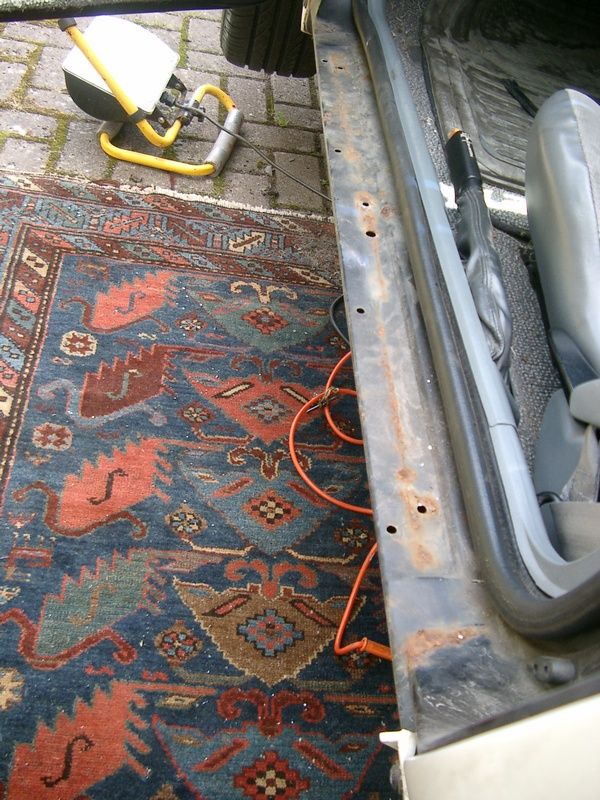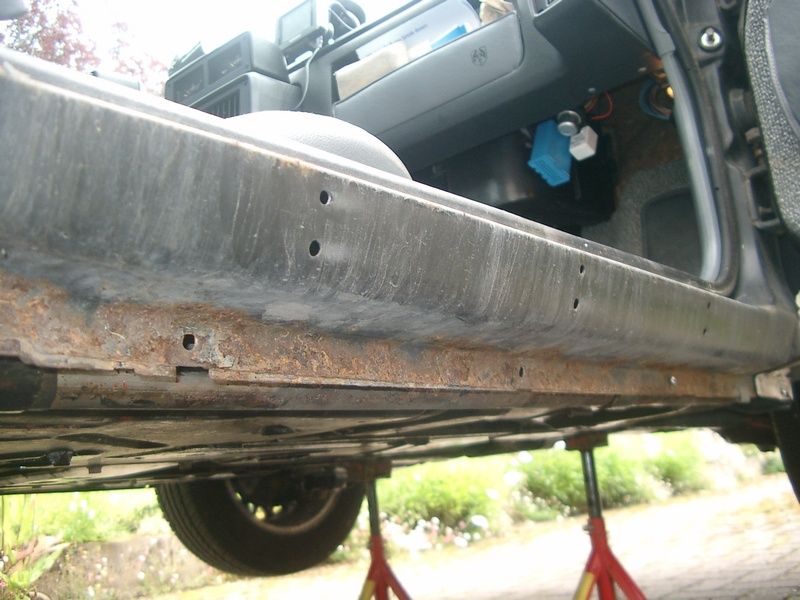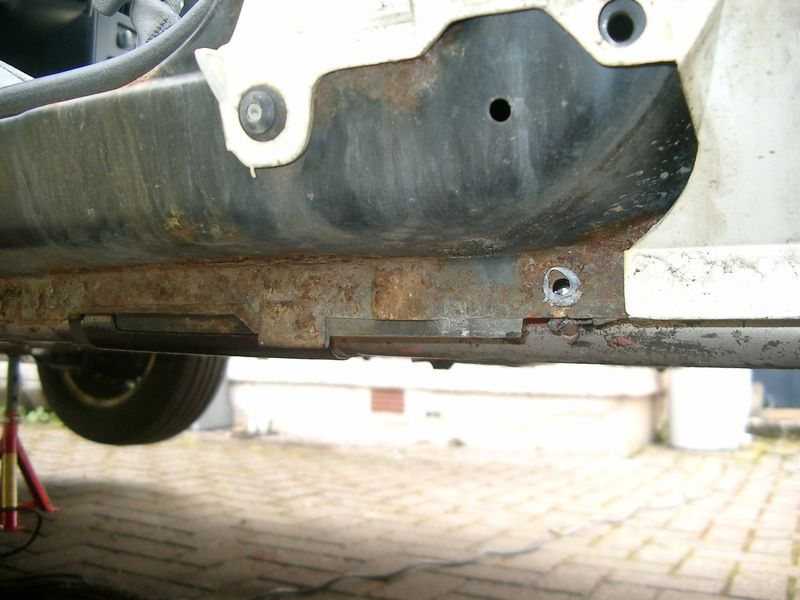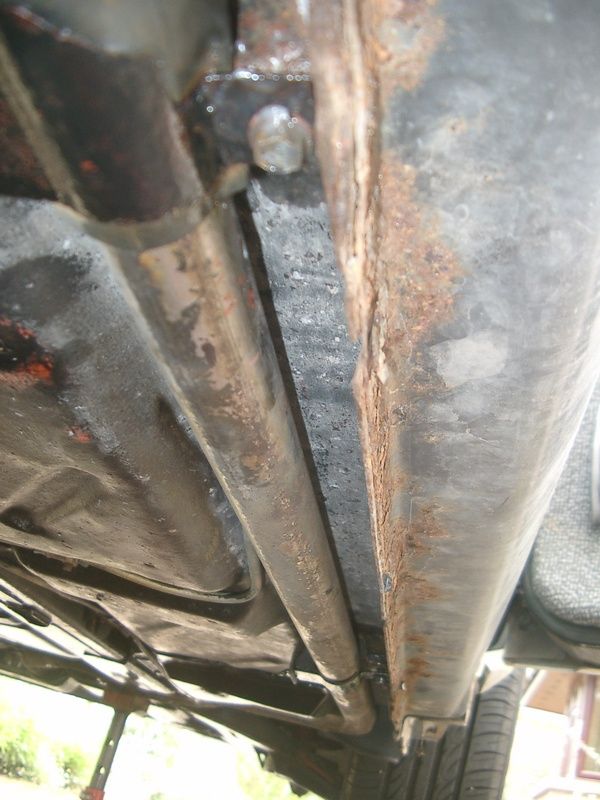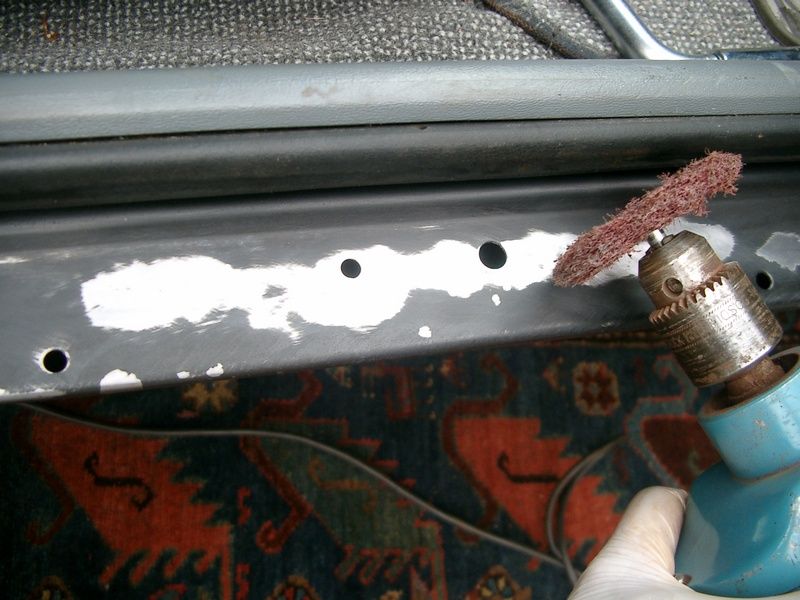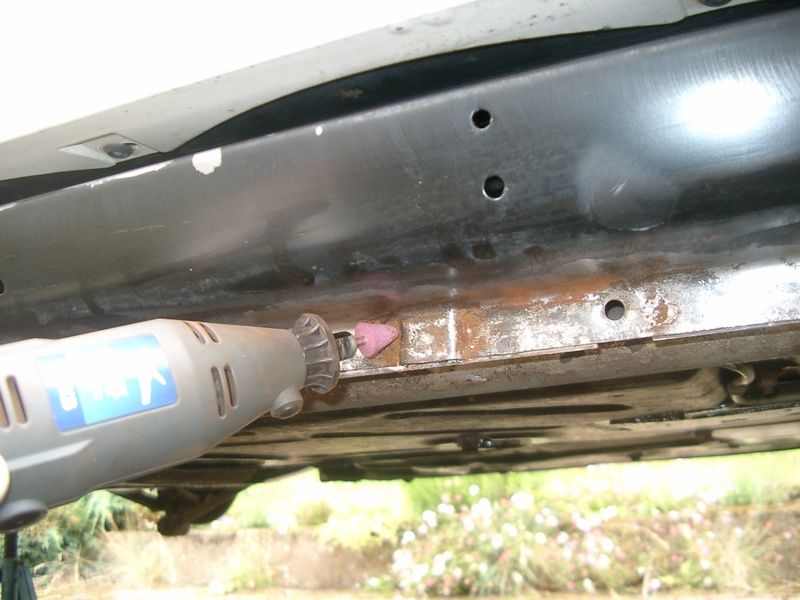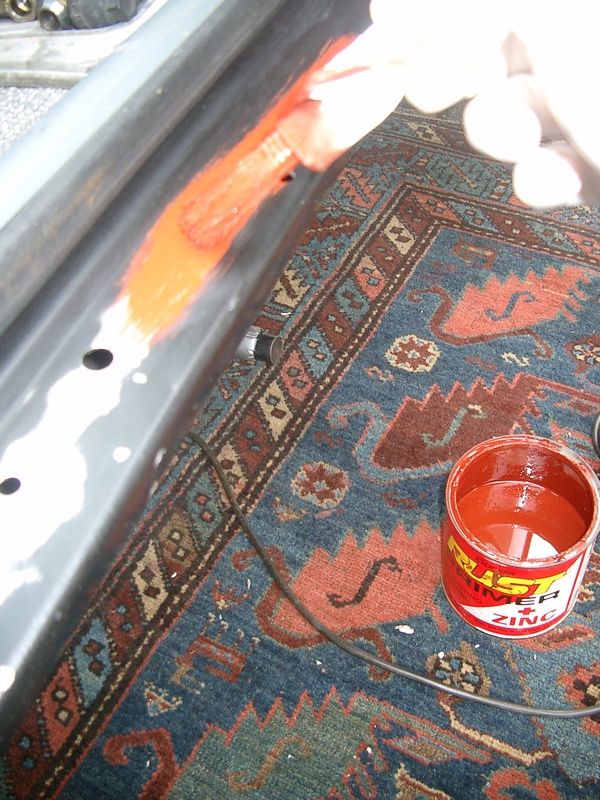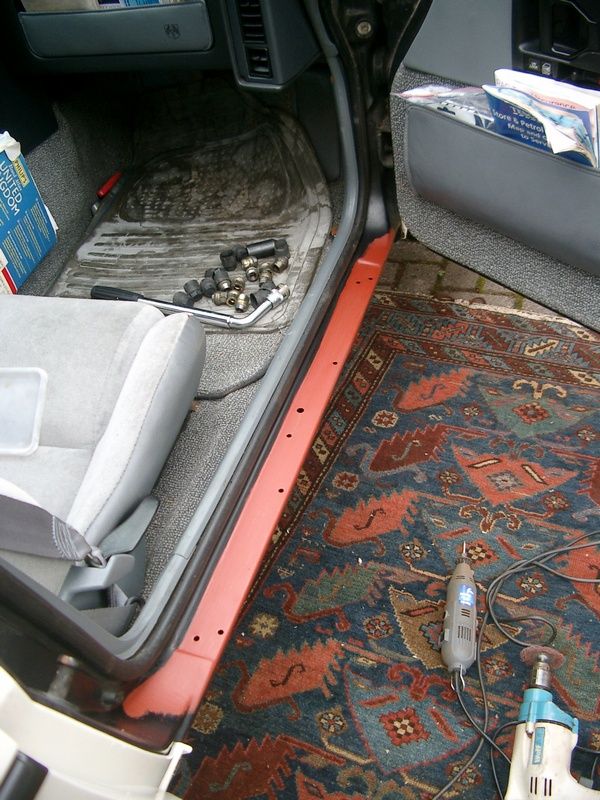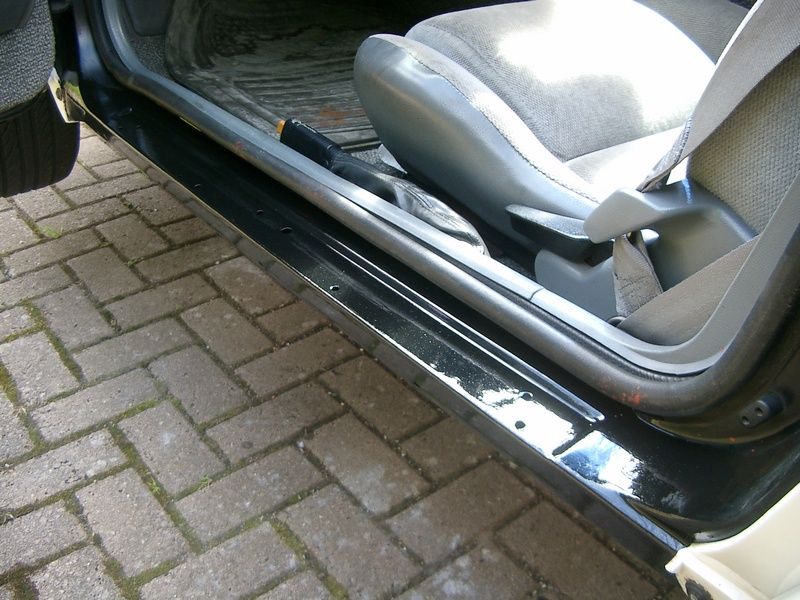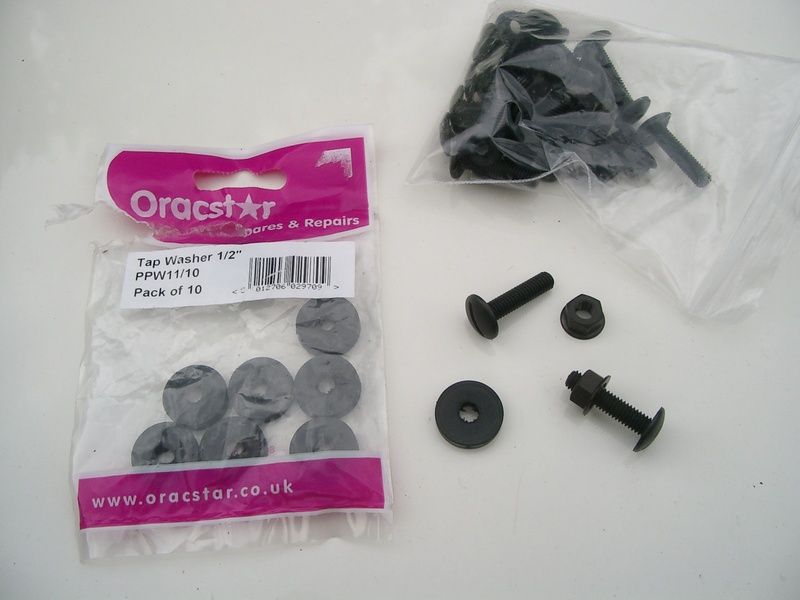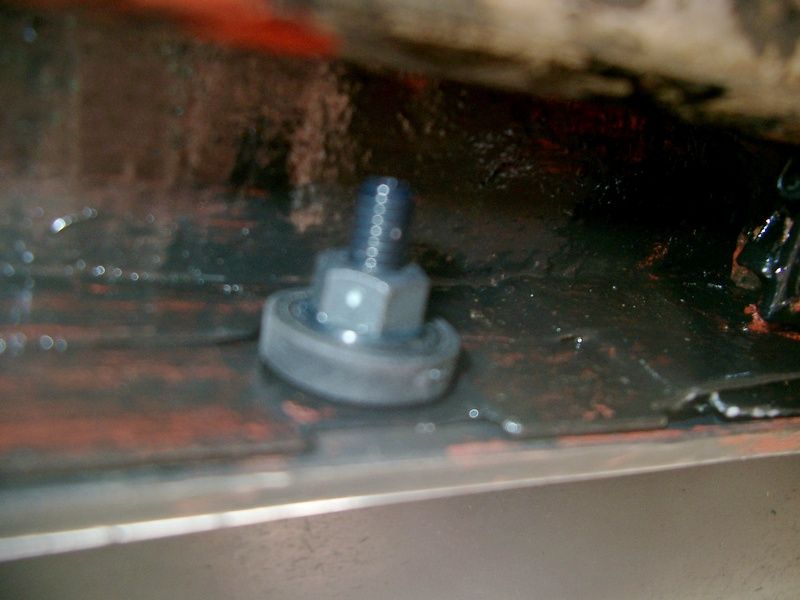I am trying to keep my '88 Formula rust-free as far as I can without dismantling and reassembling it. Recently I noticed some surface rust at the edges of the rocker (sill)-panel covers along the bottom of the doors.
[Translation note: over here we call these chassis-parts "sills" because they go along the bottom of the doors, while "rockers" are engine-components - but I'm using the word rockers for the forum's US readership!].
Anyhow, I thought other Fiero owners might like to check out the state of their rocker-panels (sills). Badly-rusted sills are a failure item in our annual roadworthiness test because in most vehicles these days, the sills are structural load-bearing elements of the chassis frame.
So here's an illustrated guide to what I found, and what I did about it.
Part 1: Removal of the plastic coversNot as easy as it appears, because of the use of rivets and because of the need to avoid snapping the little plastic tabs.
1. pop up the three slim plastic cover-strips in the upper side of the sill using a small flat screwdriver. They cover three rivets. The two smaller covers have little tabs at each end. The longer strip in the middle has three teeth along each side. This pic shows the central one - removed - and the rivet underneath.
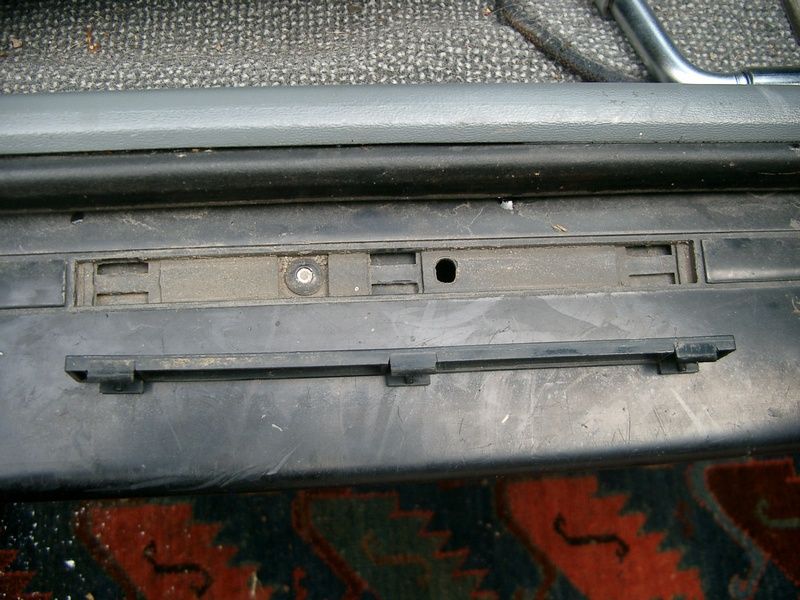
2. Unscrew the two small hex-head screws - one at each end of the sill-cover , in the wheel-arches.
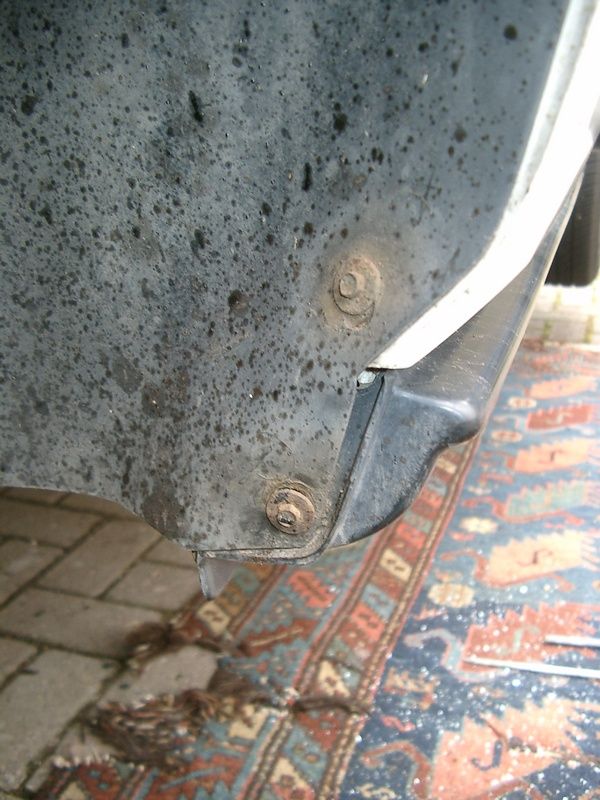
3. Drill out all the rivets. Three on the upper side of the sill, and seven along the lower edge underneath.

4. Now tilt the plastic sill cover outwards - not too far - from the bottom, and wiggle it to free the tabs which fit into slots in the body panels. It helps to know where the tabs are, and if necessary a slim screwdriver or flat blade can help to pop them out as some of them have little "teeth". There is one which slots into the front wing forward of the front edge of the door ......see this view from inside the hinge area.....
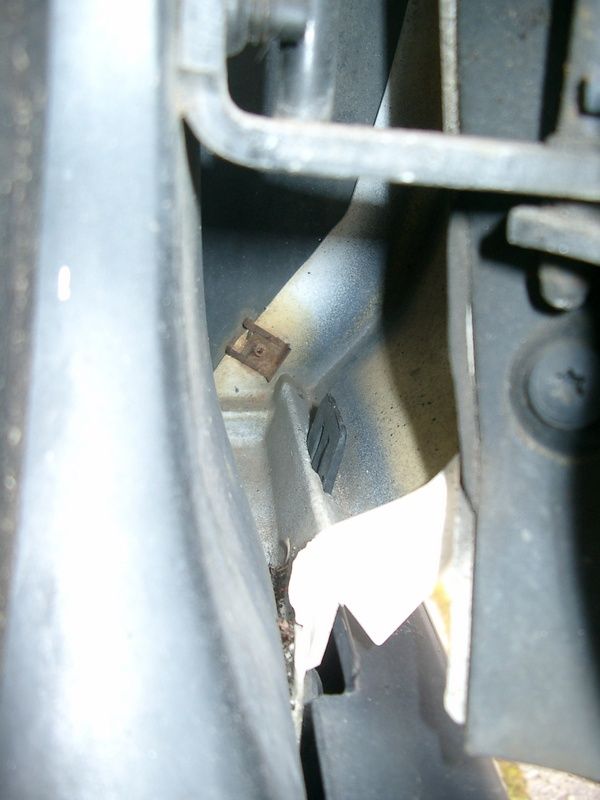
...... two of the three tabs towards the rear (between rear edge of door and rear wheelarch) also have little teeth.....
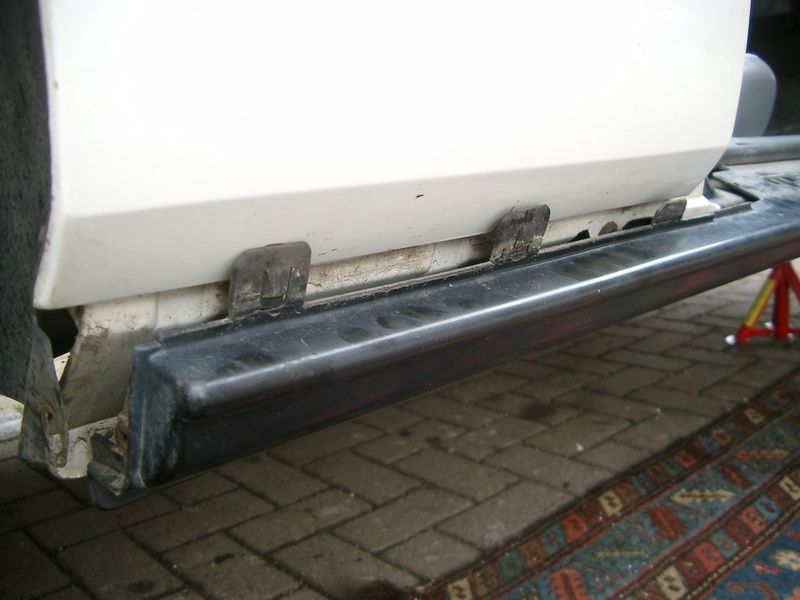
Once the plastic sill-cover is removed, the actual sill panel is visible. There is unlikely to be much rust on the upper side except possibly around the fixing holes. The very predictable bad news is that because the sill panels are spot welded along the bottom, there is ample scope for water to get into the seam and for rust to get a hold.
See next post for Part 2...
[This message has been edited by br1anstorm (edited 08-01-2015).]






















